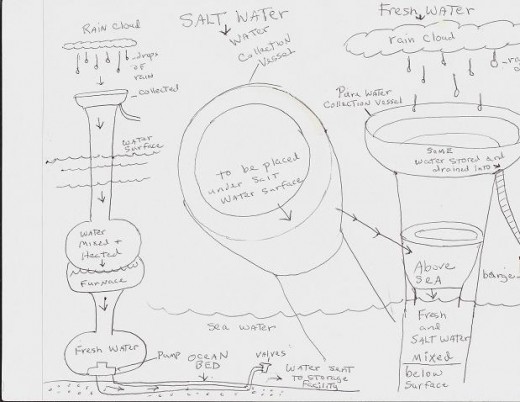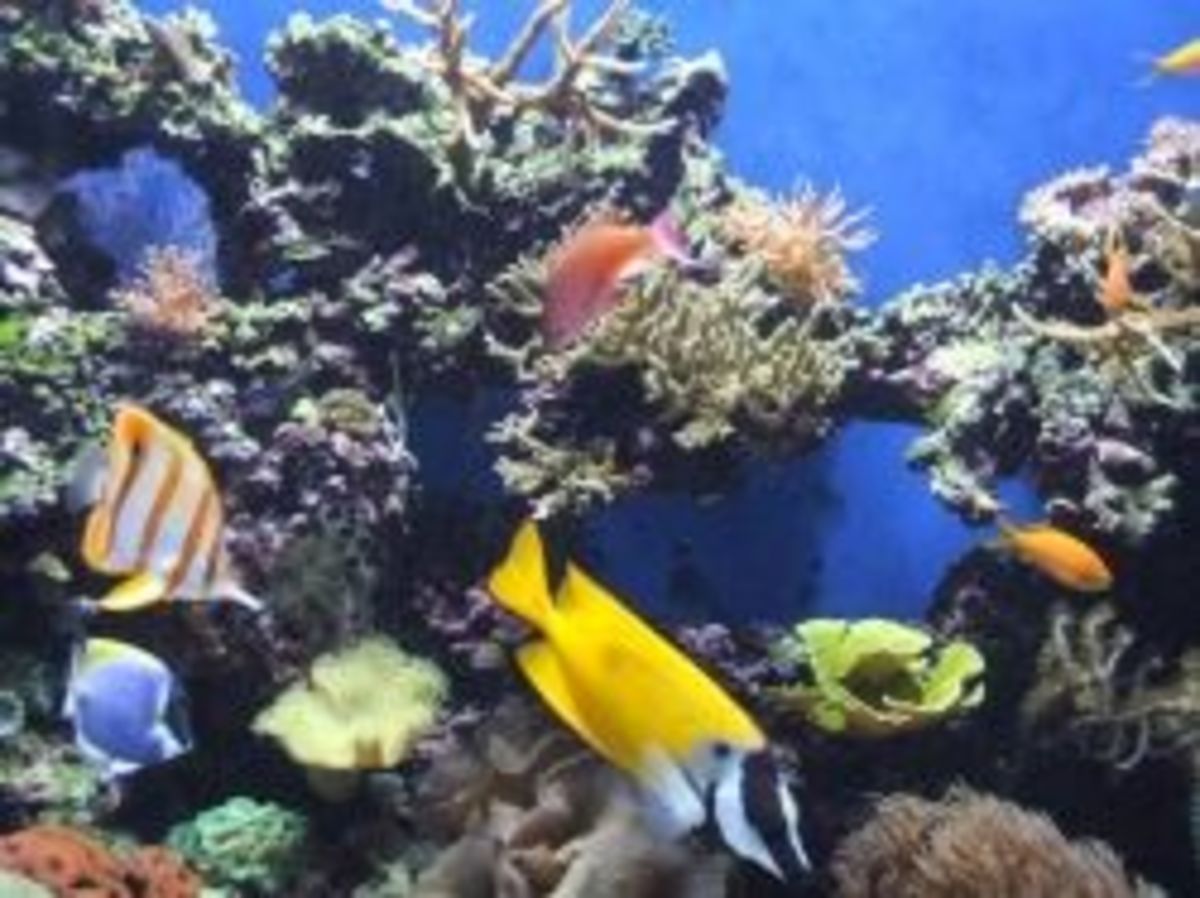Salt Water Conversion to Fresh Water
Technology of Conversion

Drinkable Water for the Future
Salt water conversation into fresh water is a subject of great focus in today's world, with its dire need for water to satisfy the needs of a world in crisis. Such countries as China and India, with their burgeoning populations, are being stressed because of the lack of fresh water needed in the security of its peoples health. Water is vital in our survival, and our own country in the U.S. has begun to be concerned with dwindling fresh water supplies. Desalination of water or removal of salt has already been approached and sites have been in progress, that purify the water and separate the salt, and if left undone, is deadly when humans drink it. Drinking sea water in excess is deadly because to maintain hydration, more water must be excreted (by sweating and urination), than the amount of water gained from drinking the sea water. The human body cannot tolerate the sodium content in the blood and the gut cannot absorb such water at high rates of concentration and becomes toxic, leading to eventual death in humans.
Desalination plants are located in this country and others around the planet. At this time the processes that are used are costly and production is limited. With the increase of the world's population of people, a greater amount of pressure is put on available fresh water supplies. We, as a people, must learn to utilize every available source of fresh water to carry on manufacturing and use in consumption for our health needs. Water is clearly the most important nutrient needed by the human body, which is composed of three quarters of water in human mass. It is a major component in every cell. Water supplies electrolytes and helps with bodily processes of metabolism and all of the bodily functions. It is important for removing toxins from the body and is vital for fitness and fat loss. Dehydration will decrease a person's ability to exercise and burn calories. It also reduces a body's ability to build protein and the synthesis needed to repair muscles, and two to three quarts are recommended for daily consumption. Being 15% depleted, in our body, is a lethal form of dehydration. This can occur in only a few days or longer, depending on the circumstances. Something that I find unusual is that our earth has about the same water content as our own human bodies, or about seventy-five percent!.
In order to remove salt from water, so that it can be used for human consumption, there must be a source of heat that will bring water to a boiling point. The water vapor or gases created by this will escape upward and collected in a containment vessel where it condenses and returns to its former state or liquid form. The water then is collected in vessels and pumped to retaining stations, where it is then pumped into barges and vessels to be carried to areas for consumption. This is simplified and there are more steps making up the entire process. The sources of heat have to be appropriate for the volume of water, and this is where the higher costs for the process come into play. The gas or electricity energy forms needed for the desalination process causes the higher costs. I have included in a series of sketches, an idea for desalination of water. I would propose that brackish water, or salt water and fresh combined, are easier to process and by mixing the two, it will be cheaper and easier to filter prior to consumption. I have proposed that huge disk shaped structures of concrete be built on tall pillars that will capture fresh water from rain. The structures will be placed in the ocean and penetrate the ocean floor. Salt water is mixed from the sea with water that is allowed to pour from the holding vessels above, and carried beneath the ocean's surface to boiling vessels where the brackish water is boiled and the condensed water is separated and piped to outside sources. It sounds simple, but is not an easy process. my concept is that brackish water will be easier to distill and more cost efficient. Water falls as rain filling the huge domes on top that start the whole process. Water from these holding structures can also be siphoned off in its pure form as well, while it is in collection vessels. Please see the diagram that I have including in an attempt to show my idea for the process.
Purified fresh water is a vital nutrient that we must all have and our future survival is dependent on being able to seek ocean sources to help us. We area a capable society and will adapt to our human needs, as they are called for, in our futures.








